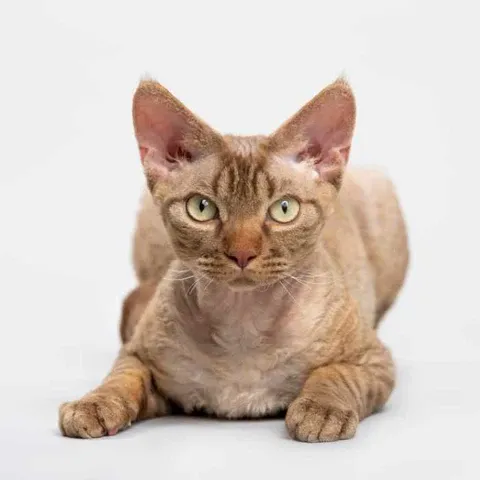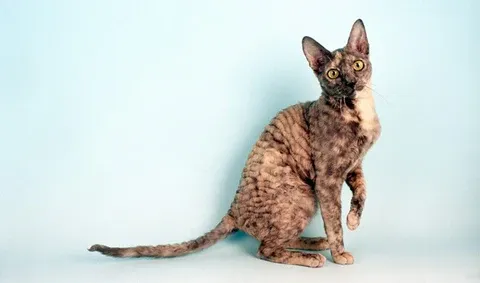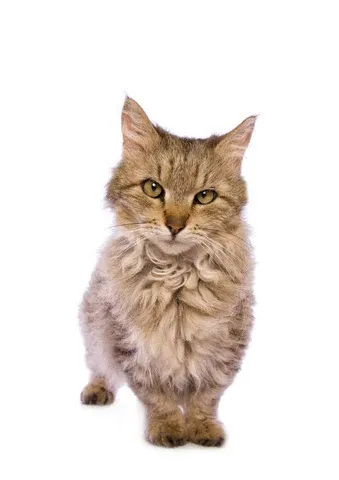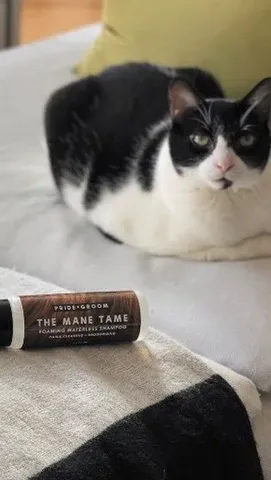Cats often steal the show with their unique personalities and striking looks, but curly haired cat breeds stand out even more. These felines, known as “Rex” cats, captivate owners with their wavy or curly coats caused by genetic mutations. If you’re a cat lover searching for a distinctive companion, exploring curly haired cat breeds can help you find the perfect match. From affectionate family pets to playful adventurers, these breeds offer variety in size, temperament, and care needs.
In this guide, we’ll cover the most recognized curly haired cat breeds, explain their curly fur origins, and share essential care tips. Whether you’re adopting your first curly kitty or adding to your feline family, this information draws from authoritative sources like The International Cat Association (TICA) and the Cat Fanciers’ Association (CFA) to ensure reliable advice.
Why Do Some Cats Have Curly Hair?
Curly hair in cats isn’t common—most have straight, fluffy coats—but it’s a fascinating genetic trait. The straight coat is the dominant trait, while curly fur is recessive, emerging from spontaneous mutations known as “Rex genes.” These mutations alter the hair follicle structure, resulting in loose waves, tight curls, or even woolly textures.
This rarity makes curly haired cat breeds special without being unhealthy. According to veterinary genetics experts, these cats are generally robust, but each breed has unique traits. Before choosing one, research their health predispositions and consult a vet experienced in feline genetics for personalized guidance.
Official Curly Haired Cat Breeds Recognized by TICA and CFA
TICA and CFA officially recognize four curly haired cat breeds, celebrated for their distinctive coats and charming dispositions. These organizations set breed standards based on years of breeding data, ensuring health and temperament consistency. Here’s a closer look at each.
Selkirk Rex
The Selkirk Rex resembles a plush British Shorthair with a curly twist—even its whiskers curl! This breed comes in various colors and patterns, making it versatile for any home. Known for their affectionate nature, Selkirk Rex cats bond deeply with families and can live up to 15-20 years with proper care, including regular vet check-ups for common issues like hypertrophic cardiomyopathy.
 Selkirk Rex cat with curly fur and whiskers
Selkirk Rex cat with curly fur and whiskers
For more on unique feline colors, check out grey cat breeds.
LaPerm
Named after the perm hairstyle, LaPerm cats develop their curls naturally as they grow. Kittens are born straight-coated, with curls appearing by 6-8 weeks. They mature slowly, reaching full size around three years, and are low-maintenance with soft, lightweight fur that rarely mats.
These medium-sized cats thrive in family settings, enjoying playtime and cuddles alike. Their hypoallergenic qualities make them ideal for allergy sufferers, though regular grooming keeps their curls defined.
 LaPerm cat showing loose curly coat texture
LaPerm cat showing loose curly coat texture
Devon Rex
With large ears, a pixie-like face, and short, loose curls, the Devon Rex might resemble a wild sprite—but it’s a devoted house cat. Playful and energetic, they love interactive toys and human company, making them poor candidates for alone time. Their coat sheds minimally, reducing allergens and cleanup.
Owners report these cats as “dog-like” in loyalty. Monitor for patellar luxation, a common orthopedic concern, through annual vet exams.
 Devon Rex cat with large ears and short curly hair
Devon Rex cat with large ears and short curly hair
Cornish Rex
Sleeker than their Devon cousins, Cornish Rex cats boast tight, uniform curls covering a slender frame. They’re athletic climbers with bold personalities, often following owners room-to-room. Their thin coat provides little insulation, so they prefer warm environments.
Distinguish them by their narrower build and lack of guard hairs, which gives a velvety feel. Like Devons, they’re prone to sunburn due to sparse fur—apply pet-safe sunscreen during outdoor time.
 Cornish Rex cat displaying tight curly coat pattern
Cornish Rex cat displaying tight curly coat pattern
Other Notable Curly Haired Cat Breeds
Beyond the official four, experimental breeds like the Skookum and Tasman Manx showcase curly diversity. The Skookum, a LaPerm-Munchkin cross, combines curls with short legs for a dwarf-like charm. Native to the U.S., these playful cats excel in agility despite their stature.
The Tasman Manx, from Australia and New Zealand, features curls plus a tailless or stubby tail mutation. Other Rex variants, such as German Rex and Oregon Rex (now extinct), highlight ongoing breeding innovations. Always source from reputable breeders registered with TICA to support ethical practices.
 Skookum cat as a small dwarf breed with curly fur
Skookum cat as a small dwarf breed with curly fur
How to Care for Curly Haired Cat Breeds
Grooming curly haired cat breeds mirrors standard cats but emphasizes curl preservation. Brush weekly with a soft-bristle tool to prevent matting—fingers work well for detangling. Their coats hold natural oils, so bathe sparingly using vet-recommended, pH-balanced shampoos.
Short-haired types like Devon and Cornish Rex need sun protection; indoor living or window screens help. Feed high-quality, protein-rich diets supporting skin health, as per AAFCO guidelines. Annual vet visits catch issues early, ensuring a lifespan of 12-20 years.
For hygiene without water baths, foam-based cleaners maintain curls effectively.
 Curly haired cat being groomed with waterless shampoo
Curly haired cat being groomed with waterless shampoo
Final Thoughts
Curly haired cat breeds like the Selkirk Rex, LaPerm, Devon Rex, and Cornish Rex bring joy with their quirky looks and loving natures. Research thoroughly, prioritize health screenings, and provide tailored care to match their needs. Consult a veterinarian for breed-specific advice, and consider adoption from shelters promoting these unique felines.
Embrace the curls—your new companion will reward you with endless purrs and personality.
References:
- The International Cat Association (TICA): Breed Standards
- Cat Fanciers’ Association (CFA): Rex Breed Profiles
- American Veterinary Medical Association (AVMA): Feline Genetics Guidelines
